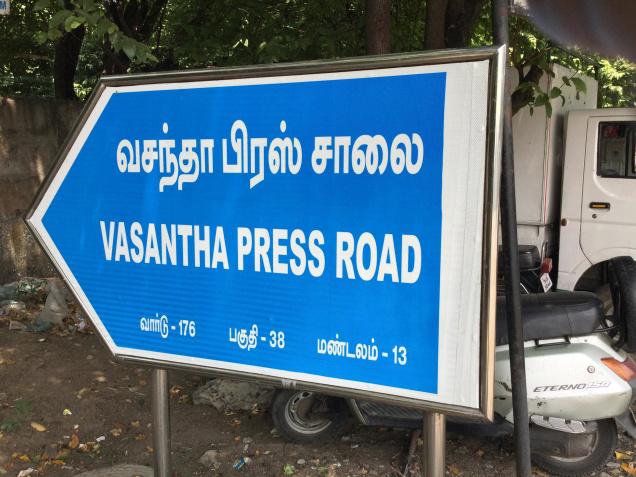
That is an intriguing name. The road in question is in Adyar, shortly after the bridge. It had me scurrying home to consult Venkatesh Krishnamoorthy’s book A Tale of Two Schools, which documents the history of the Sankara Schools run by the Indian Education Trust. Much of the details in this article are from that work.
Madame Helena Petrovna Blavatsky and Colonel Henry Steel Olcott founded the Theosophical Society (TS) in 1875 in New York. They acquired the 27-acre estate of the thickly wooded Huddlestone Gardens on the banks of the Adyar River in 1882 and established the world headquarters of the Society there in 1883. Annie Besant, who became its President in 1907, was instrumental in the Society becoming a huge 266-acre estate by 1910.
The TS needed a press for printing its tracts, and in 1907, Annie Besant purchased the necessary machinery and established it just outside the estate, on a narrow road adjoining the Society’s world headquarters entrance. By then, the Theosophists had ‘sanskritised’ Besant into Vasantha, and the printing facility became the Vasantha Press, the road taking its name from it. An interesting aside is that the Besant School begun by the TS had its prayer dedicated to Annie Besant. The song composed by the legendary Papanasam Sivan is in raga Vasantha and begins with the words Devi Vasanthe!
The foundation stone for the Vasantha Press was laid in 1908, and it became functional a short while later. In 1914, Mrs Besant acquired the Madras Standard, a daily, and renamed it New India. The paper, which electrified the freedom movement with its demand for Home Rule, was initially brought out from the Vasantha Press.
Running into frequent trouble with the authorities, it moved its offices in 1916 to the New India Building on Second Line Beach, from where it was published till its demise, which was probably in 1926. New India Building is now home to another of Besant’s creations, the Young Men’s Indian Association (YMIA). It is temporarily housed there, even as it takes ages to make up its venerable mind over what is to be done with its original home — Gokhale Hall, on Armenian Street.
After Annie Besant’s death in 1933, the TS acquired and ran Vasantha Press for long. An expanded facility was built in Besant Gardens in the TS premises in 1971 and the Press moved there. The Sankara School, set up in R.K. Nagar, Raja Annamalaipuram, at the instance of the Kanchi Paramacharya and spearheaded by P.R. Pattabhiraman, was then looking for property that it could acquire and expand in. The Indian Education Society (now Trust) that manages the school purchased the erstwhile Vasantha Press property in 1973. The school moved in the same year and continues to function from there. The old press building has made way for state-of-the-art classrooms, but the spirit of Besant, who believed in preparing the younger generation for meeting the challenges of the future, lives on.
source: http://www.thehindu.com / The Hindu / Home> Features> MetroPlus> Society / by Sriram V / Chennai – July 29th, 2016